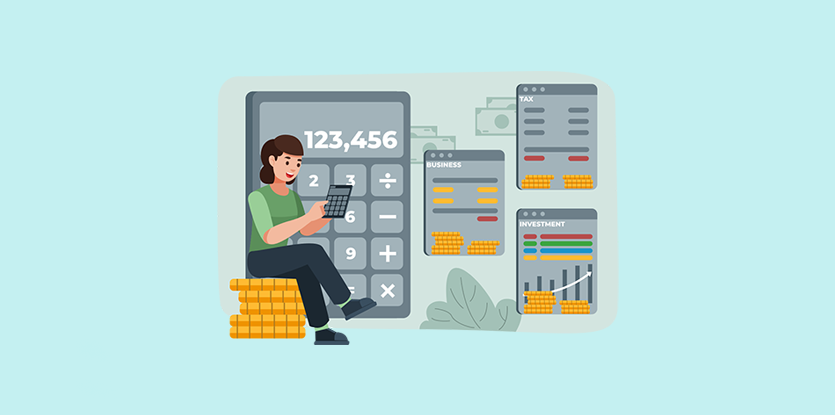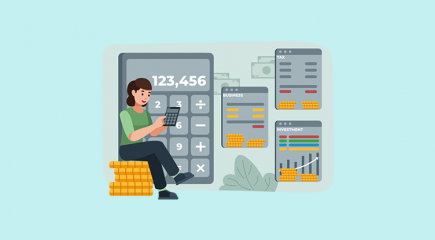The debt-to-capital ratio is among a group of leverage financial ratios that shows the proportion of debt a company uses to finance its assets, in relation to the amount of equity. The measurement of a company’s financial leverage is computed by taking the short and long term liabilities, interest-bearing debt and dividing it by the total capital. The total capital here would be the shareholder’s equity added to the interest-bearing debt.
The ratio assesses the risk and shows the business’s ability to handle slumps in sales because it illustrates the relationship between the debt and equity financing. If the company finances using loans, there is a high-risk element because the principal and interest payments have to be paid to the lender.
Formula
The debt-to-capital is calculated by dividing the total debt by the shareholder equity and total debt. The data to calculate the debt-to-capital ratio are found on the company balance sheet.
Debt-to-Capital Ratio = Total Debt / Total Debt + Shareholder Equity
What it Shows
This ratio provides analysts with a position of the financial settings and if there is a good investment in the workings. If the ratio is high it is an indicator that the business uses loans to finance the operations rather than available equity. That is dangerous because it illustrates that it functions from paycheck to paycheck. It also means there would be a large strain on the company.
There is also a more significant risk of not being able to maintain the bills if they are not done on time. That is dependent, though on the sector and the way the business operates. There are debt levels which are unsustainable for one organization, but the same amount would not affect another. Using total capital gives a good picture of the business’s financial health.
When a company has high debt obligations, restructuring the debt allows them to reduce its debt-to-capital ratio. This is especially important if the company pays high-interest rates on its loan and lower interest rates are available. This action will minimize a company’s interest expense and the loan’s monthly payment, resulting in improved cash flow and boosting the company’s bottom line.
Debt-to-Capital Ratio Interpretation
Utilizing the debt-to-capital ratio allows investors and analysts to understand how firms can manage capital structures. A comparison of the ratio of different businesses helps inform which of them has the right approach to balancing risk and potential profits. The lenders may also use the tool to assess the business’s credit risk to ensure the organization can meet the interest and the principal.
The debt-to-capital is preferred compared to other financial ratios assessing leverage. For example, like the debt to total assets, others take the total debt, including non-interest-bearing obligations. These are usually the least of most companies’ concerns because they do not have the same sense of urgency compared to interest-bearing debts.
The debt-to-capital does not have an ideal figure. Businesses operating in particular industries may favor high-level ratios as compared to other sectors. That is because these companies prefer being financed by debt than equity. It does not mean that the high ratio firms are not in good financial health.
For example, companies with stable cash flows such as banks and pipelines may have a higher debt to equity because they have a steady income. They also provide some of the basic needs for day-to-day utilities to afford to rack up debt. That is opposed to non-essential industries like technology that has volatile income.
Considerations of Debt
Generally speaking, the more the ratio increases, the more the level of debt used to finance the organization rather than cash from investors or equity. However, historical data is needed from the firm to make an adequate comparison. As the level of debt increases, the risk of not fulfilling short term and long term financial obligations also rises.
However, a decrease within the ratio would also show the equity levels are rising. Financial institutions of lending consider insolvency or the risk of bankruptcy before they decide to extend the credit. A high level of risk shows the client will not be able to repay their financial obligations, and there is a high chance of defaulting.
Should the long term debt-to-capitalization ratio be greater than 1.0, it would show the business has a higher level of debt compared to the capital. That is a red flag on its financial health because the debt is not within manageable levels. Business owners need to monitor the debt-to-capital ratio to ensure it is within the recommended levels for their industry and competition.
Limitations
The debt-to-capital can be affected by using accounting conventions. The financial statements’ values are based on historical accounting approaches and may not depict the current market values. It is essential to be sure concerning the correct values used, so the ratio is not skewed. Another popular leverage ratio is the debt-to-equity ratio, which looks at proportion of debt versus equity.
The Right Option Strategy for Accelerated Growth
Finding the right option strategy to fit your specific needs is often difficult for new traders, stop playing the guessing game and get instant access to top-level market research coupled with the perfect options strategy. See firsthand how professional traders combined ratios, fundamental, and technical indicators to make above-average returns. If you’re ready to take your trading to the next level, we can help you achieve your goals, click here to get started now.


